análise do xiaomi 15: um smartphone android competente que não se destaca
xiaomi 15 oferece desempenho confiável, mas é superado pelos principais concorrentes android
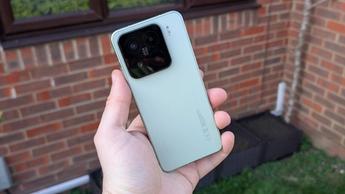
- Review do Xiaomi 15: preço, data de lançamento e onde comprar
- Xiaomi 15: análise do design e da tela
- Análise da câmera do Xiaomi 15: recursos e desempenho
- Análise de desempenho do Xiaomi 15: velocidade, benchmarks e experiência do usuário
- Análise da bateria e do carregamento rápido do Xiaomi 15
- Análise do software do Xiaomi 15 e visão geral dos recursos
- Análise e veredito do Xiaomi 15
Nossa equipe dedica horas analisando e avaliando minuciosamente os lançamentos mais recentes de produtos, serviços e aplicativos para ajudar você a fazer as melhores escolhas. Saiba mais sobre nosso processo de testes e avaliações.
O Xiaomi 15 é um dos dois novos smartphones topo de linha apresentados por este renomado fabricante chinês, anunciado durante o Mobile World Congress 2025 em Barcelona. Embora não tenha o design marcante do Xiaomi 15 Ultra, ainda traz muitos dos mesmos recursos impressionantes. Em alguns aspectos, ele até supera o modelo Ultra.
No papel, o Xiaomi 15 apresenta um conjunto de especificações de respeito, incluindo uma tela grande e brilhante, câmeras avançadas, uma bateria robusta de 5.240 mAh e o poder do novo processador Snapdragon 8 Elite. Ele roda o Android 15 com a interface HyperOS 2 da Xiaomi, oferecendo uma experiência de uso única em relação ao software padrão do Google.
Como você verá na análise completa do Xiaomi 15 abaixo, este smartphone entrega desempenho excelente, mesmo sem o rótulo "Ultra". No entanto, sua disponibilidade limitada — especialmente nos Estados Unidos e na América do Norte — é um ponto negativo. Seria ótimo vê-lo se destacar ainda mais entre os melhores celulares Android, que são mais fáceis de encontrar no mundo todo.
Review do Xiaomi 15: preço, data de lançamento e onde comprar
O Xiaomi 15 não está disponível nos Estados Unidos, seguindo a abordagem usual da empresa de não vender seus smartphones por lá. No entanto, o Xiaomi 15 está à venda oficialmente no Reino Unido e já pode ser adquirido.
Os preços começam em £899 para o modelo com 256GB de armazenamento, enquanto a versão de 512GB custa pelo menos £999. Convertendo para o Brasil, isso representa aproximadamente R$ 5.800 e R$ 6.500, respectivamente, considerando as taxas de câmbio e possíveis impostos de importação. Assim, o Xiaomi 15 acaba ficando um pouco mais caro do que o modelo anterior e também supera concorrentes como o Xiaomi 14, Samsung Galaxy S25 e o iPhone 16.
Apesar do preço mais elevado, é importante destacar que muitos celulares concorrentes oferecem apenas 128GB de armazenamento nas versões básicas. Com 256GB já na configuração padrão, o Xiaomi 15 apresenta um ótimo custo-benefício para quem busca mais espaço interno.

Xiaomi 15: análise do design e da tela
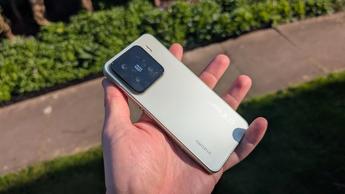
O Xiaomi 15 conta com uma tela AMOLED vibrante de 6,36 polegadas, resolução nítida de 1200 x 2670 e taxa de atualização adaptativa de 1-120Hz, garantindo rolagem suave e visuais dinâmicos. Essa tela atinge até 3.200 nits de brilho, facilitando a visualização mesmo sob luz solar intensa, e oferece suporte a HDR10+ e Dolby Vision para uma experiência imersiva. O sensor de impressão digital ultrassônico está integrado na parte inferior da tela, proporcionando acesso rápido e seguro.
Embora o Xiaomi 15 utilize o Shield Glass de primeira geração — introduzido na linha Xiaomi 14 anterior — sua proteção não é tão avançada quanto a do modelo Ultra, que possui uma camada mais nova e resistente. Ainda assim, o aparelho conta com uma estrutura reforçada de alumínio de alta resistência e certificação IP68 de resistência à água e poeira, garantindo durabilidade para o uso diário.
Pesando apenas 191 gramas, o Xiaomi 15 é visivelmente mais leve que a versão Ultra e um pouco mais fino, com 7,9 mm de espessura. Apesar de não ser o smartphone mais fino do mercado, ele mantém a mesma espessura do iPhone 16, demonstrando o compromisso da Xiaomi com um design elegante e prático.
O Xiaomi 15 oferece uma tela brilhante e agradável, tornando a experiência de assistir a filmes, especialmente por streaming, muito prazerosa. Embora o display não seja tão impressionante quanto o do Xiaomi 15 Ultra, ainda assim entrega um desempenho sólido para o uso diário.
No quesito design, o Xiaomi 15 conta com uma traseira de vidro fosco elegante, mas o módulo de câmera quadrado e maior pode não agradar a todos.
Por outro lado, o conjunto de câmeras é mais compacto em comparação a alguns concorrentes, como o iPhone 16 Pro Max. Já a edição Silver Chrome do Xiaomi 15 Ultra chama atenção pelo visual retrô, trazendo um diferencial de estilo único.
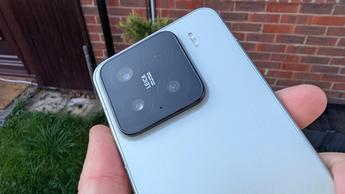
Análise da câmera do Xiaomi 15: recursos e desempenho
O Xiaomi 15 conta com um conjunto versátil de três câmeras traseiras, cada uma oferecendo resolução de 50MP e aprimoradas com lentes Leica. O sistema inclui uma lente principal padrão, uma lente ultrawide (grande-angular) e uma lente teleobjetiva com zoom óptico de 2,6x. Na parte frontal, a câmera de selfie tem 32MP, pronta para autorretratos de alta qualidade.
As especificações das câmeras dão uma ideia do desempenho, mas testes fotográficos no dia a dia revelam muito mais. Para avaliar o Xiaomi 15, ele foi comparado diretamente ao Google Pixel 9 Pro, um topo de linha famoso por suas capacidades impressionantes de câmera. Embora o Pixel 9 Pro estabeleça um padrão alto, o Xiaomi 15 mostra competência e entrega bons resultados em vários cenários.
Começando pela câmera principal, as imagens do Xiaomi 15 geralmente apresentam tons mais frios em comparação com os tons mais quentes e alaranjados do Pixel 9 Pro. Ambas as câmeras capturam bem o clima de um pôr do sol, mas a foto do Xiaomi tende a ser mais fiel à realidade, apesar de parecer um pouco esmaecida. A reprodução realista das cores e os detalhes mais nítidos dão vantagem ao Xiaomi 15, revelando nuances que podem passar despercebidas na foto do Pixel.
Em ambientes internos, o Xiaomi 15 produz fotos mais claras e nítidas, mas às vezes peca na precisão das cores, deixando objetos mais amarelados do que realmente são. Além disso, ele não captura superfícies reflexivas com tanta eficiência. Já o Pixel 9 Pro mantém os brancos mais fiéis e registra reflexos, embora suas fotos em close possam ficar um pouco mais borradas.
Nos testes com as lentes ultrawide, ambos os aparelhos entregaram imagens mais escuras do que o esperado, com mais sombras do que o visto ao vivo. O Xiaomi 15 apresentou fotos um pouco mais claras, mas a diferença é sutil. Ao analisar de perto, as imagens do Pixel ficam mais borradas e pixeladas nas bordas, enquanto o Xiaomi 15 mantém maior nitidez.
No modo telefoto, as fotos iniciais dos dois aparelhos são parecidas, com o Pixel novamente trazendo tons mais quentes. No entanto, o Xiaomi 15 perde em nitidez ao aumentar o zoom, com menos detalhes em objetos distantes e mais desfoque, enquanto o Pixel mantém um pouco mais de definição, principalmente nos elementos do fundo.
Em ampliações de 2x e 5x, o Pixel 9 Pro continua na frente, oferecendo imagens mais claras e nítidas, onde detalhes como tijolos individuais e plantas permanecem visíveis. As imagens do Xiaomi 15 ficam mais escuras e menos definidas nesses níveis de zoom.
O desempenho em selfies é misto. O Xiaomi 15 produz selfies mais claras e com menos reflexos de lente, mas essas imagens frequentemente ficam esmaecidas e tendem a suavizar demais a pele, alterando até traços naturais. O Pixel 9 Pro evita esse embelezamento artificial, mas suas selfies podem ficar escuras e granuladas, especialmente sob iluminação desafiadora.
No modo retrato, os padrões se repetem. O Pixel 9 Pro reduz o ruído e mantém as cores naturais, enquanto os retratos do Xiaomi 15 podem parecer lavados demais. Ambos podem apresentar dificuldades na detecção de bordas, principalmente em roupas com texturas, mas o Xiaomi 15 costuma entregar imagens mais nítidas, às vezes sacrificando a fidelidade dos tons de pele e da cor dos olhos.
Em condições de pouca luz, ambos apresentam pontos fortes. O Xiaomi 15 capta mais detalhes do fundo, embora o sujeito principal possa parecer esmaecido e um pouco borrado. O Pixel 9 Pro oferece melhor fidelidade de cor no sujeito, mas pode perder detalhes do fundo no escuro.
No geral, o Xiaomi 15 oferece uma experiência de câmera sólida, entregando fotos de alta qualidade em suas várias lentes. Embora não atinja o desempenho de alguns modelos ultra premium, mantém resultados impressionantes de forma consistente. Um ponto negativo é o recurso automático de suavização facial, que pode alterar a aparência natural e não agradar a todos os usuários.
Análise de desempenho do Xiaomi 15: velocidade, benchmarks e experiência do usuário

Assim como a versão Ultra e a maioria dos principais smartphones Android lançados este ano, o Xiaomi 15 vem equipado com o chipset Snapdragon 8 Elite. As opções de memória variam conforme o armazenamento: o modelo de 256 GB oferece 12 GB de RAM, assim como algumas versões de 512 GB, enquanto outras versões de 512 GB e todas as de 1 TB contam com 16 GB de RAM. O aparelho testado aqui é o Xiaomi 15 de 512 GB com 16 GB de RAM.
O Snapdragon 8 Elite é conhecido por seu desempenho potente e, embora o Xiaomi 15 Ultra tenha apresentado resultados impressionantes — ainda que não recordistas — nos benchmarks, o Xiaomi 15 também mostra força.
No teste single-core do Geekbench 6, o Xiaomi 15 alcançou uma média de 2.972 pontos, ficando logo atrás do 15 Ultra, mas superando-o no teste multi-core, com 9.330 pontos contra 9.064 do Ultra. Em comparação com outros aparelhos topo de linha, como o Samsung Galaxy S25, o Xiaomi 15 apresentou tendências semelhantes. No entanto, o iPhone 16 Pro registrou pontuações single-core mais altas, mas desempenho multi-core inferior.
O desempenho gráfico do Xiaomi 15 superou as expectativas, ficando à frente da maioria dos concorrentes no teste 3DMark Solar Bay Unlimited. Ele atingiu uma média de 43,9 fps e liderou o grupo em pontuação geral, com apenas o Galaxy S25 chegando perto, com 43,4 fps e 11.412 pontos, contra 11.565 pontos e 43,9 fps do Xiaomi.

O Xiaomi 15 apresentou resultados impressionantes em nosso teste de transcodificação de vídeo, convertendo um vídeo 4K para 1080p em apenas 40 segundos. Isso é 8 segundos mais rápido que o Xiaomi 15 Ultra e significativamente mais ágil que tanto o Galaxy S25 (53 segundos) quanto o OnePlus 13 (1 minuto e 1 segundo). No entanto, os dispositivos da Apple com seus chips personalizados continuam liderando nesse quesito, já que o iPhone 16 Pro completou a mesma tarefa em apenas 21 segundos.
A experiência de jogos mobile no Xiaomi 15 foi fluida e responsiva, mesmo nas configurações gráficas e taxas de quadros mais altas. Durante longas sessões de jogo com brilho máximo, o aparelho permaneceu frio, sem aquecimento perceptível.
O que mais chamou a atenção foi a consistência de desempenho: mesmo à distância, os personagens e movimentos na tela se mantiveram estáveis — uma área em que o Xiaomi 15 Ultra apresentou algumas falhas. Isso demonstra que as melhorias gráficas do Xiaomi 15 não aparecem apenas nos testes de benchmark, mas também se traduzem em experiências reais de jogos e multimídia.
Análise da bateria e do carregamento rápido do Xiaomi 15
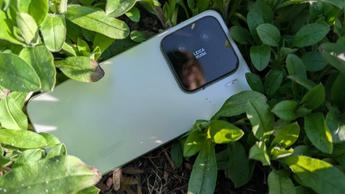
O Xiaomi 15 conta com uma bateria robusta de 5.240 mAh, superando muitos smartphones premium que normalmente oferecem até 5.000 mAh. Embora o tamanho da bateria seja importante, a duração total também depende de fatores como o tamanho da tela e a eficiência energética. Felizmente, o Xiaomi 15 demonstra uma autonomia impressionante.
No nosso teste de bateria, reproduzimos um vídeo no YouTube com 50% de brilho e resolução 1080p por três horas. Após esse período, o Xiaomi 15 perdeu apenas 10% da carga. Para comparação, o Xiaomi 15 Ultra, com bateria e tela maiores, perdeu 11%. O Xiaomi Mix Fold 4 teve uma queda de 14%, e o Pixel 9 Pro do Google apresentou uma redução de 21% no mesmo teste.
O Xiaomi 15 suporta carregamento com fio de até 90W, mas é necessário adquirir separadamente um carregador compatível de 90W para atingir essa velocidade. Mesmo com um carregador de 67W, o carregamento é rápido: recuperou 46% em apenas 15 minutos e chegou a 81% em 30 minutos. Uma carga completa, de 0% a 100%, levou cerca de 49 minutos.
Durante o carregamento, um multímetro USB-C mostrou que a velocidade atingiu o pico de 35 a 40W na primeira meia hora, caindo para menos de 20W após 30 minutos — um comportamento típico das baterias de lítio para garantir segurança e durabilidade.
No geral, o Xiaomi 15 se destaca pela capacidade da bateria, gerenciamento eficiente de energia e carregamento rápido, sendo uma ótima opção para quem busca desempenho duradouro em um smartphone.

Análise do software do Xiaomi 15 e visão geral dos recursos
O Xiaomi 15 Ultra e o Xiaomi 15 rodam o HyperOS 2, a versão personalizada do Android 15 desenvolvida pela Xiaomi. Esses smartphones receberão quatro gerações de atualizações do sistema Android — até o Android 19 — e seis anos de atualizações de segurança. Embora algumas marcas líderes já ofereçam sete anos de atualizações para seus modelos topo de linha, o compromisso da Xiaomi ainda se destaca em relação a muitos fabricantes de Android que limitam o suporte a apenas quatro anos.
Se você prefere uma experiência Android com um toque do design da Apple, vale a pena conhecer o HyperOS 2. A interface é claramente baseada no Android, mas traz diversos elementos inspirados no iOS, como a separação entre o menu de notificações (acessado ao deslizar para baixo) e um painel semelhante ao Central de Controle.
A Xiaomi também está investindo fortemente em recursos de IA. Enquanto alguns, como as ferramentas de edição de fotos com inteligência artificial, são fáceis de encontrar, outros são mais sutis e podem exigir um pouco de exploração para serem descobertos. No geral, o HyperOS 2 busca unir inovações em software com uma experiência familiar e fácil de usar.

Legendas com tecnologia de IA e tradução em tempo real chamaram minha atenção como recursos interessantes para explorar. No entanto, tanto no Xiaomi 15 quanto no 15 Ultra, achei difícil acessar essas ferramentas sem orientações adicionais.
Assim como no modelo Ultra, o intérprete por IA parecia muito semelhante a outros aplicativos de tradução, tornando difícil perceber benefícios exclusivos da tecnologia de inteligência artificial. Embora a integração fluida da IA seja positiva, existe uma necessidade real de oferecer funcionalidades de tradução diferenciadas que destaquem este software em relação aos concorrentes.
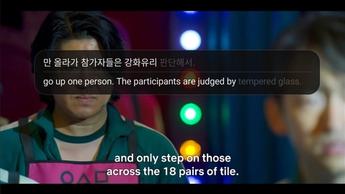
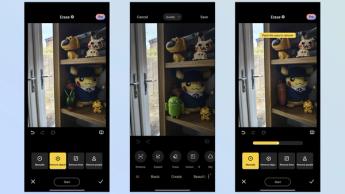
As legendas geradas por IA tiveram um bom desempenho — quando funcionaram. No entanto, elas tiveram dificuldade em lidar igualmente com todos os idiomas. Por exemplo, tentar assistir a Round 6 em seu coreano original foi praticamente impossível, com legendas muito aquém da qualidade encontrada nas principais plataformas de streaming.
Por outro lado, a IA conseguiu traduzir com sucesso uma transmissão ao vivo de notícias em espanhol, com pouquíssimos problemas, acompanhando até mesmo o ritmo acelerado do apresentador — um feito impressionante para tradução automática em tempo real.
As ferramentas de edição com IA no Xiaomi 15 apresentaram resultados variados. Assim como no Xiaomi 15 Ultra, a função de apagar objetos com IA foi inconsistente, frequentemente substituindo o objeto selecionado por algo ligeiramente menor. No entanto, destacar manualmente o objeto aumentava as chances de removê-lo completamente.

A expansão de imagens com inteligência artificial pode ser impressionante, mas os resultados dependem do tipo de imagem com que você está trabalhando. Por exemplo, ao adicionar mais fundo a uma foto noturna de um narciso na grama, a IA mesclou a nova área de forma tão natural que era difícil perceber qualquer edição. No entanto, quando tentei expandir uma montagem complexa de Lego, o resultado foi visivelmente menos convincente.
Mantenha expectativas realistas, especialmente se estiver lidando com imagens detalhadas ou desafiadoras.
Os recursos para alterar a visão do céu e remover reflexos de janelas em fotos superaram minhas expectativas. A ferramenta de remoção do céu não apenas substituiu o céu, mas também ajustou o tom geral da foto para criar um visual mais natural. Embora eu nem sempre tenha preferido os novos tons, as ferramentas de edição entregaram um resultado mais realista do que eu esperava.
No geral, os recursos de edição de fotos com inteligência artificial do Xiaomi 15 são impressionantes. No entanto, encontrar essas ferramentas pode ser um desafio, já que elas não são facilmente acessíveis — um problema comum não só neste aparelho, mas em muitos smartphones e sistemas operacionais.
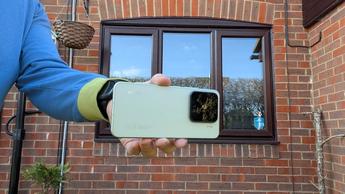
Análise e veredito do Xiaomi 15
O Xiaomi 15 é um smartphone impressionante, embora muitas vezes fique ofuscado pelo mais avançado Xiaomi 15 Ultra, que apresenta design e desempenho aprimorados por um preço mais alto. Ainda assim, o Xiaomi 15 padrão se destaca pela excelente duração de bateria, ótimos resultados em testes de desempenho e câmeras confiáveis.
Os recursos de IA do aparelho são inovadores, mas a Xiaomi poderia melhorar sua acessibilidade — especialmente para ferramentas além da edição de fotos. Enquanto muitos smartphones escondem suas opções de IA, torná-las mais fáceis de encontrar incentivaria mais usuários a explorar e adotar a tecnologia HyperAI.
Um dos desafios é a disponibilidade: o Xiaomi 15 é mais difícil de adquirir que dispositivos de grandes concorrentes e não possui lançamento oficial no Brasil. No entanto, se você conseguir comprar um, terá um aparelho equilibrado, que entrega ótimo desempenho e praticidade no dia a dia.
